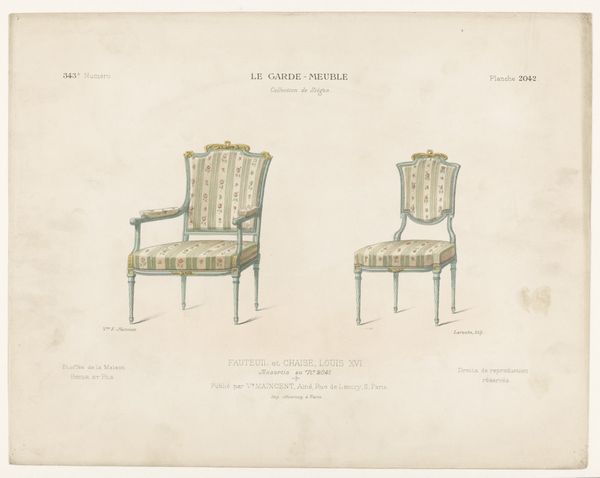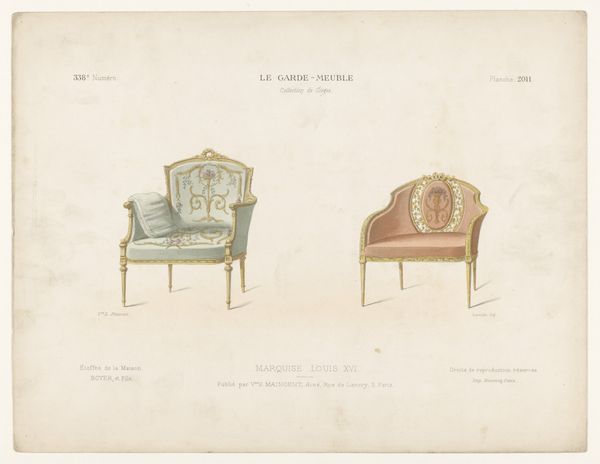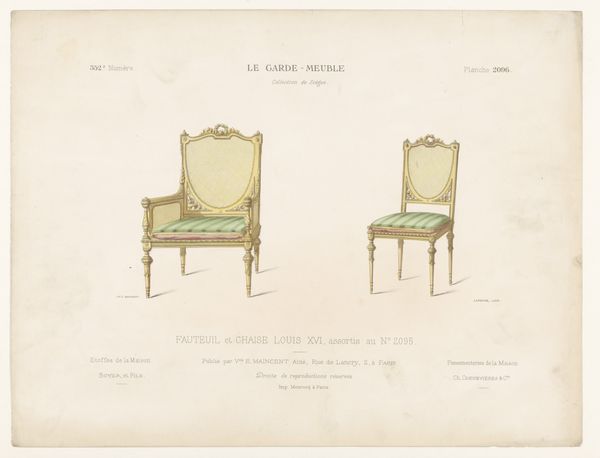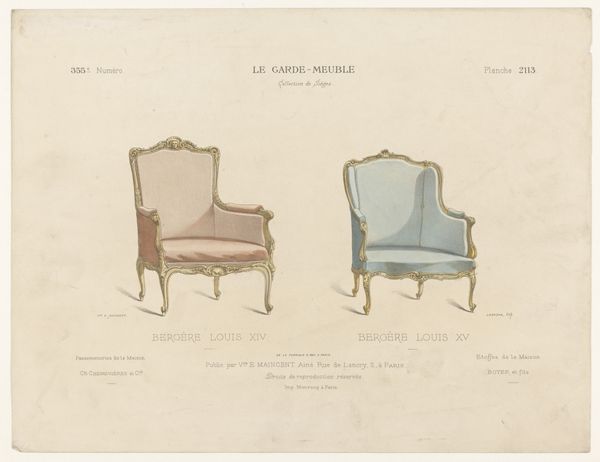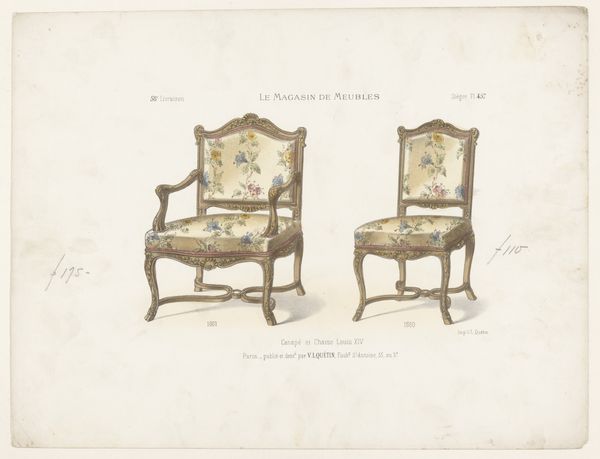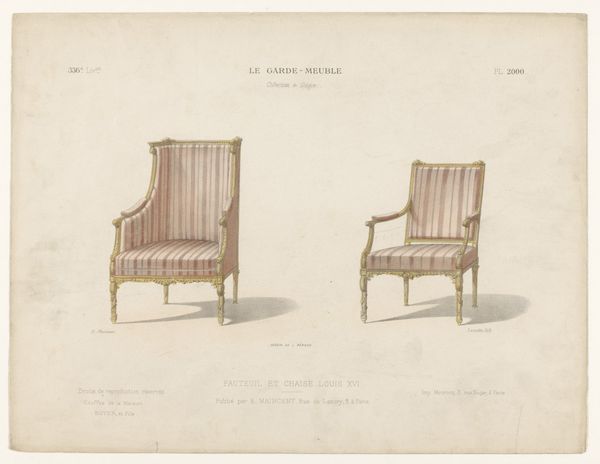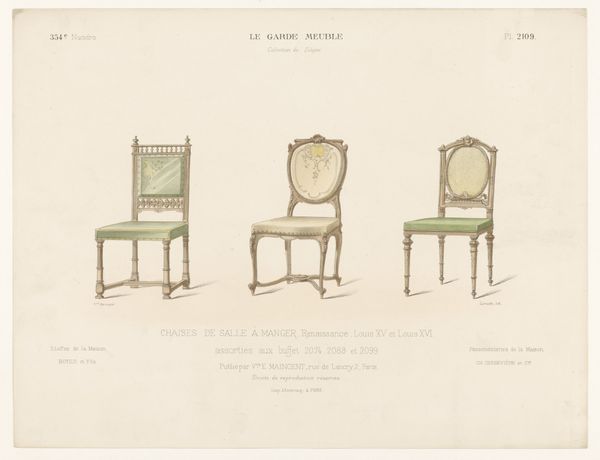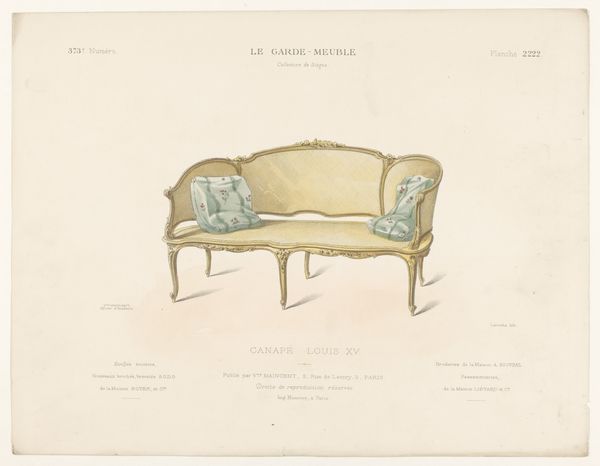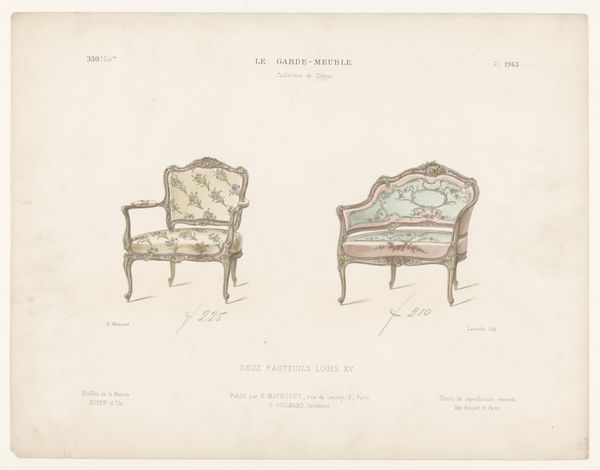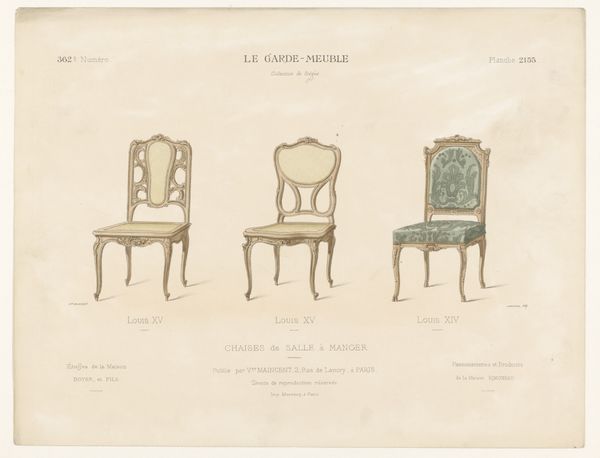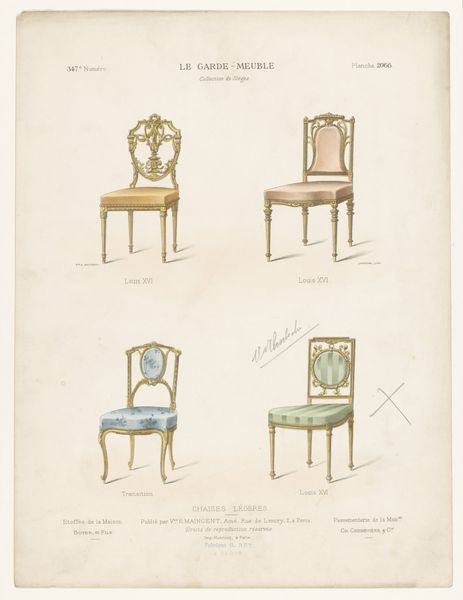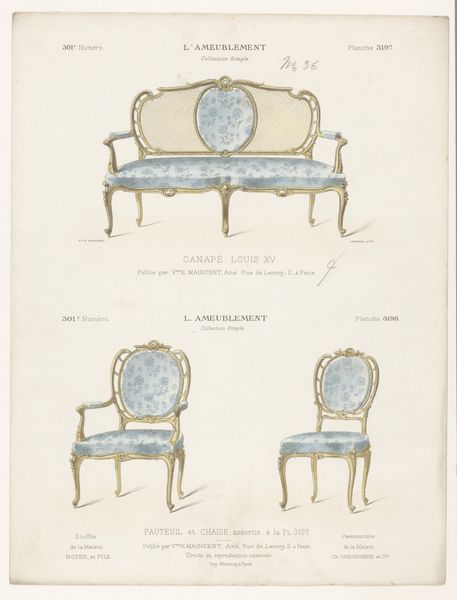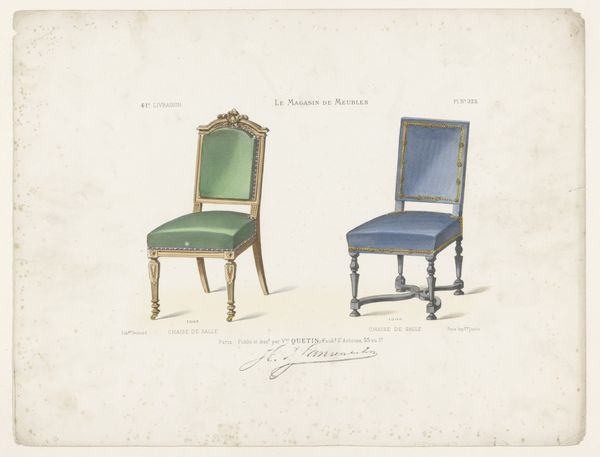
drawing
#
drawing
#
furniture
#
watercolour illustration
#
academic-art
#
watercolor
Dimensions: height 276 mm, width 358 mm
Copyright: Rijks Museum: Open Domain
Editor: This watercolour illustration presents "Two Armchairs" - "Twee fauteuils" - dating sometime between 1895 and 1935, by Léon Laroche. The chairs, depicted side by side, have very different upholstery. What stands out to me is how the style feels almost like a historical record or document of furniture design. What do you see in this piece, considering its historical and cultural context? Curator: It is indeed a fascinating record. What strikes me is its function within a developing visual culture. Think about the role of print culture at the time: journals, magazines, design catalogues. These images played a crucial part in shaping tastes, promoting styles, and dictating trends in interior design. These furniture pieces became symbols of status and societal belonging. Considering the specific labelling of each armchair, how do you believe this sheet would circulate among design professionals and affluent clients? Editor: That’s a really insightful perspective. The labels 'Louis XVI' and 'Transition' seem to signal very particular periods and styles. Would this be aimed at educating or perhaps offering options to customers looking to furnish their homes in a historically informed manner? Curator: Exactly. But also consider the power dynamics inherent in the design and distribution of these images. Who had access to them? Who could afford such furniture? Design wasn't simply about aesthetics; it was tied to class, power, and the aspiration to emulate certain lifestyles. What could a comparison of furniture styles over decades, offered in this manner, represent socially? Editor: So, it's more than just a depiction of furniture. It reflects and reinforces societal structures through material culture. Curator: Precisely! Understanding this intersection unveils the deeper implications behind seemingly simple design illustrations. This exchange broadened my perception of historical materialism, making it vivid. Editor: Me too, I hadn't considered how directly visual culture influences society at large!
Comments
No comments
Be the first to comment and join the conversation on the ultimate creative platform.
